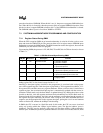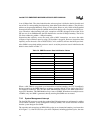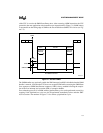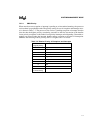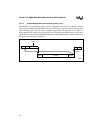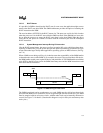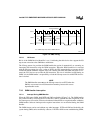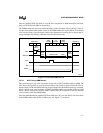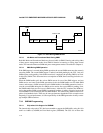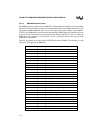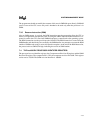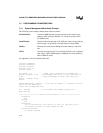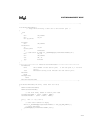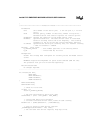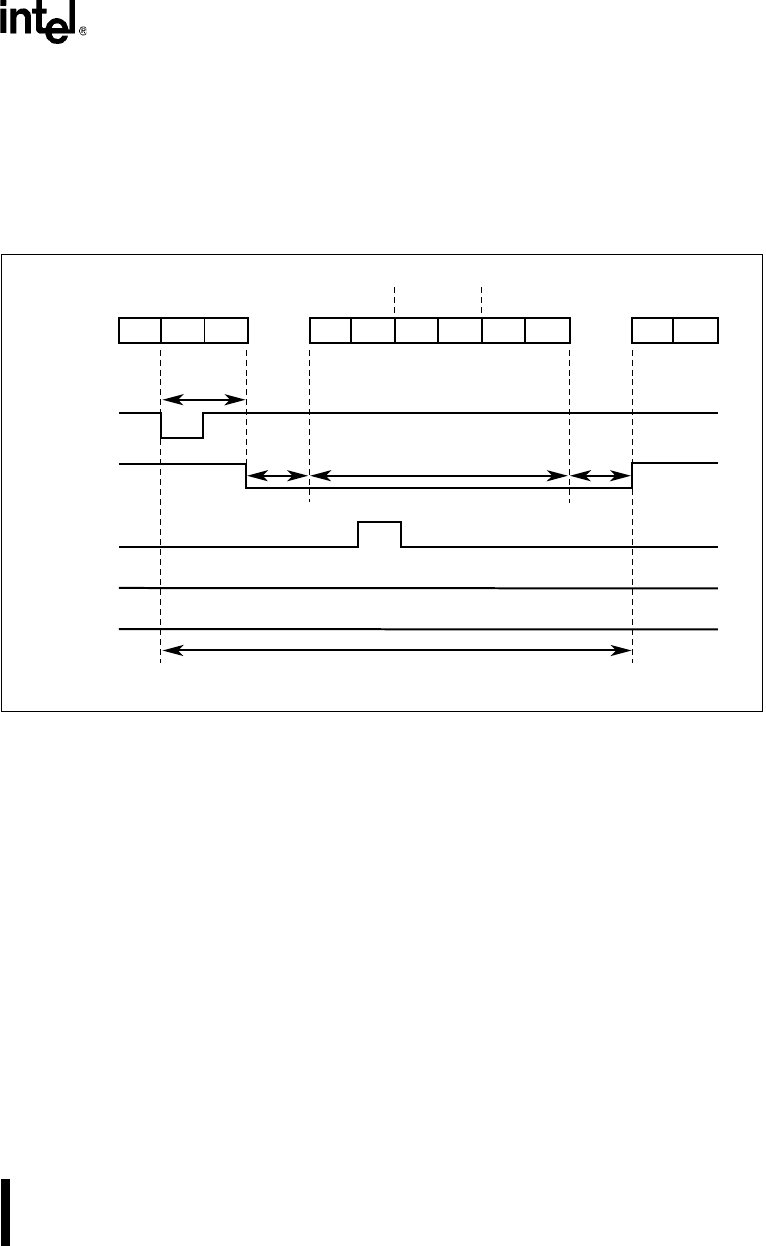
7-11
SYSTEM MANAGEMENT MODE
then any pending INTR and NMI is serviced after completion of RSM instruction execution.
Only one INTR and one NMI can be pending.
The SMM handler may choose to enable interrupts to take advantage of device drivers. Since in-
terrupts were enabled while under control of the SMM handler, the signal SMIACT# continues
to be asserted. If the system designer wants to take advantage of existing device drivers that le-
verage interrupts, the memory controller must take this into account.
Figure 7-6. Interrupted SMI# Service
7.3.3.2 HALT During SMM Handler
The system designer may wish to place the system into a HALT condition while in SMM. The
CPU allows this condition to occur; however, unlike a HALT while in normal mode, the CPU in-
ternally blocks INTR and NMI from being recognized until after the RSM instruction is executed.
When a HALT needs to be breakable in SMM, the SMM handler must enable INTR and NMI
before a HALT instruction execution. NMI is enabled after the completion of the first interrupt
service routine within the SMM handler.
After the SMM handler has enabled INTR and NMI, the CPU exits the HALT state and returns
to the SMM handler when INTR or NMI occurs. See Figure 7-7 for details.
A2505-02
SMI#
SMIACT#
INTR
NMI
RESET
Application
Instr
SMM
Handler
Intr
Service
SMM Handler
SMI
Latency
State
Save
RSM
State
Restore
NMI is Blocked
Instr Instr Instr Instr Instr
SMM
Handler
Instr
Instr Instr
Application
Instr
Instr



